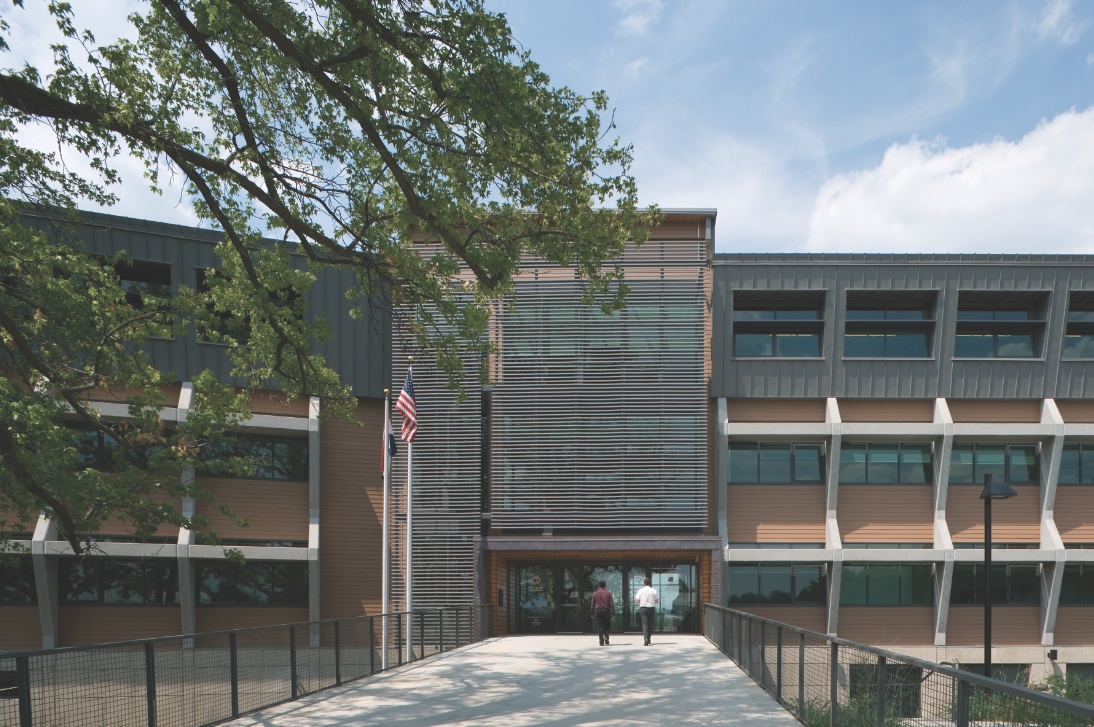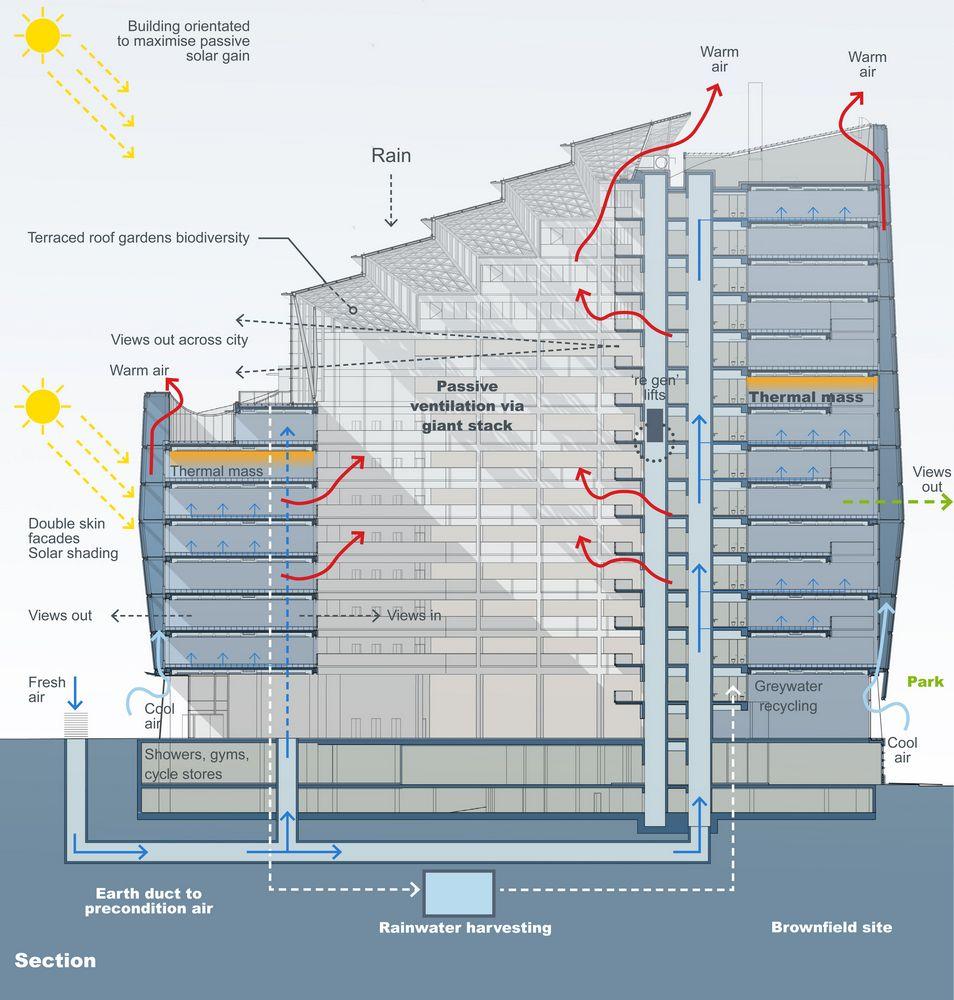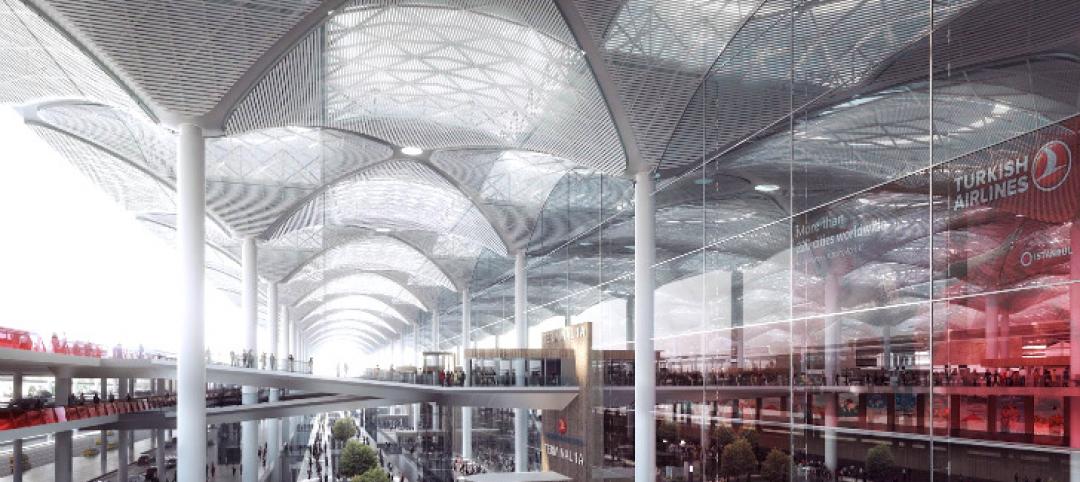For two years, my colleague, architect Ulf Meyer, and I worked on a book, The World’s Greenest Buildings: Promise vs. Performance in Sustainable Design (Routledge), published last January. We were particularly interested in reviewing high-performance green buildings from the U. S. and Canada, as well as those from Europe and the Asia/Pacific region, to see if we could discern some universal goals for green building projects.
We aimed at getting operating data from LEED Platinum (or equivalent) buildings completed since 2003 that represented nonresidential typologies and were at least 50,000 sf in size—in other words, the typical commercial/institutional building type.
In many respects, this work was a follow-up to my 2009 book, Green Building Trends: Europe (Island Press), which looked specifically at European examples and focused on green building technologies and design approaches. What I found in the course of researching that book was a series of great examples of sustainable design and a lively tradition of such buildings that went back 15 years or more.
DATA, DATA, WHO’S GOT THE DATA?
But what was lacking in my study of European green buildings was solid information on actual performance—verifiable data based on real-world field performance that would help link design approaches with actual energy and water use. That was the deficiency that Ulf and I sought to remedy in our research for The World’s Greenest Buildings.
The most surprising result of our two years of research: how few owners of so-called “high-performance” buildings were actually willing (or even able) to share their operating results with us. We ran into this roadblock even with structures built on university campuses or for government agencies?—?the very owners that should, in theory at least, be open to collecting and dispensing such information.
In fact, nothing in law or professional practice compels building owners to share such data. Without feedback from actual operating data, though, how are designers and their project partners supposed to do a better job? (To my mind, it’s a scandal that the standard AIA contract does not require building owners to disclose operating data to their Building Teams and allow them to publish it, a change that the AIA could easily make in support of its commitment to the 2030 Challenge.)
Holabird & Root Architects and Engineers and The Weidt Group worked with contractor Boldt Construction on the $63 million Regents Hall of Natural and Mathematical Sciences at St. Olaf College, Northfield, Minn. The 190,400-sf lab building uses a heat-recovery loop, a so-called “cascade” air system, and a low-flow, variable-air-volume fume hood exhaust system to control energy use. Photo: Don F. Wong/Courtesy Holabird & Root
Fortunately, the landscape is shifting dramatically, partly as a result of a number of local initiatives in cities like New York, Seattle, San Francisco, Austin, Texas, and Washington, D.C., that require owners of buildings of more than 50,000 sf to disclose operating data in publicly accessible databases. (California’s AB 1103 law now requires energy use disclosure, but only when a whole building is sold or leased, so it’s going to be a while before we have any significant data from that mandate.) Fast-forwarding to 2015, we’re likely to have much more data to feed back to building designers, contractors, owners, and operators.
In The World’s Greenest Buildings, we did our best to locate and solicit data from 55 high-performance projects from the three major regions of the world where sustainable design has taken off: North America (15 from the U.S., three from Canada), Europe, and Asia/Pacific (including five from Australia). The lone Latin American project, the Transoceánica office building, in Santiago, Chile, was actually among the lower energy users in the world, which taught us that there are surprises everywhere!
Of the U.S. projects we studied, four were located in the Midwest: Great River Energy Headquarters, Maple Grove, Minn.; Lewis and Clark State Office Building, Jefferson City, Mo.; Regents Hall of Natural & Mathematical Sciences, St. Olaf College, Northfield, Minn.; and Johnson Controls Campus, Glendale, Wis. In the end, we were able to gather building operating data from projects in 18 countries and compare the data within a region as well as across regions.
SET YOUR ENERGY TARGET FROM THE START
Here are a few key lessons that can be derived from the book:
1. In your next building project, you should be able to achieve the same energy and water use as LEED Platinum buildings around the world, because there is nothing magical or geographically specific about good design. What is required is a specific (and early) intent by the entire Building Team to meet clear numerical targets for energy and water use. We found that an energy use intensity (EUI) of 35 (35,000 Btu/sf/year) before adding contributions from renewables can be achieved.
2. What makes high-performance projects stand out is the commitment of owners and their Building Teams to achieving “best-in-class” results. The projects we studied were all LEED Platinum, which means they started with high-performance energy-efficiency goals. What also stands out is the commitment to an integrated design process; it’s almost always the case that without the right process, you can’t get the best outcome.
Great River Energy Headquarters, Maple Grove, Minn., uses underfloor air distribution and generous daylighting, as well as a lake-source geothermal system. Perkins+Will (architect/interior design) led the Building Team of BKBM Engineers (SE), Dunham Associates (MEP), RLK Inc. (CE), and McGough (GC) on the $65 million, 166,000-sf office building for the second-largest electric power supplier in Minnesota. Photo: Paul Crosby / Courtesy Perkins+Will
3. Most surprisingly, high-performance green design uses about the same energy everywhere in the world, from Northern Europe to the tropics. Typically, once you have a good building envelope and efficient HVAC systems in place, half the remaining energy use comes from plug/process loads and lighting, which tend to be geographically about the same in office buildings, leaving only about 15-20% for heating/cooling loads. In the northern latitudes, most loads are devoted to heating in winter, while in the tropics, most loads are devoted to cooling; these more or less balance out over the course of the year.
4. Great green buildings are just as beautiful, if not more so, than buildings with ordinary energy and water performance. Perhaps it is beauty itself that should be our goal in sustainable design. One of the core tenets of our book is that there is no inherent conflict between buildings with architectural merit and those with high-performance green characteristics (such as those with LEED Platinum status) and low-energy outcomes.
5. The last lesson from our research is that there are no standard definitions of building energy use, no good ways to tease out core energy use from special operations such as onsite data centers. In fact, in Australia, we were surprised to find that building energy use is typically reported only for the base building, leaving out tenant loads in commercial offices, a practice that dramatically understates actual energy use. (This is also the case in many European countries.) We hope that researchers in this field will make sure that we can arrive at common definitions, so that comparisons across countries will become much easier in the future.
What does this mean for the U.S. design and construction community?
First, you should aim at having every office and academic building you work on use less than 35,000 Btu/sf/year for “core” uses (i.e., excluding data centers and special process loads such as wet labs), before adding any contribution from renewables.
Second, there are plenty of great design strategies from around the world that are available and that will work in the cold winters and hot/humid summers of the Midwest.
Third, and perhaps most important, an integrated design process is essential for achieving great results.
Author ID: Jerry Yudelson, PE, LEED Fellow, is CEO of Yudelson Associates, a green building and sustainability consultancy in Tucson, Ariz., and author of 13 books on green building, green homes, sustainable development, and water conservation. He has keynoted more than 50 green building conferences since 2007 and delivered the keynote address at the 2013 BUILDINGChicago/Greening the Heartland show.
Related Stories
| Jun 12, 2014
Austrian university develops 'inflatable' concrete dome method
Constructing a concrete dome is a costly process, but this may change soon. A team from the Vienna University of Technology has developed a method that allows concrete domes to form with the use of air and steel cables instead of expensive, timber supporting structures.
| Jun 2, 2014
Parking structures group launches LEED-type program for parking garages
The Green Parking Council, an affiliate of the International Parking Institute, has launched the Green Garage Certification program, the parking industry equivalent of LEED certification.
| May 29, 2014
7 cost-effective ways to make U.S. infrastructure more resilient
Moving critical elements to higher ground and designing for longer lifespans are just some of the ways cities and governments can make infrastructure more resilient to natural disasters and climate change, writes Richard Cavallaro, President of Skanska USA Civil.
| May 23, 2014
Top interior design trends: Gensler, HOK, FXFOWLE, Mancini Duffy weigh in
Tech-friendly furniture, “live walls,” sit-stand desks, and circadian lighting are among the emerging trends identified by leading interior designers.
| May 20, 2014
Kinetic Architecture: New book explores innovations in active façades
The book, co-authored by Arup's Russell Fortmeyer, illustrates the various ways architects, consultants, and engineers approach energy and comfort by manipulating air, water, and light through the layers of passive and active building envelope systems.
| May 19, 2014
What can architects learn from nature’s 3.8 billion years of experience?
In a new report, HOK and Biomimicry 3.8 partnered to study how lessons from the temperate broadleaf forest biome, which houses many of the world’s largest population centers, can inform the design of the built environment.
| May 13, 2014
19 industry groups team to promote resilient planning and building materials
The industry associations, with more than 700,000 members generating almost $1 trillion in GDP, have issued a joint statement on resilience, pushing design and building solutions for disaster mitigation.
| May 11, 2014
Final call for entries: 2014 Giants 300 survey
BD+C's 2014 Giants 300 survey forms are due Wednesday, May 21. Survey results will be published in our July 2014 issue. The annual Giants 300 Report ranks the top AEC firms in commercial construction, by revenue.
| Apr 29, 2014
USGBC launches real-time green building data dashboard
The online data visualization resource highlights green building data for each state and Washington, D.C.
| Apr 22, 2014
Bright and bustling: Grimshaw reveals plans for the Istanbul Grand Airport [slideshow]
In partnership with the Nordic Office of Architecture and Haptic Architects, Grimshaw Architects has revealed its plans for the terminal of what will be one of the world's busiest airports. The terminal is expected to serve 150 million passengers per year.



















